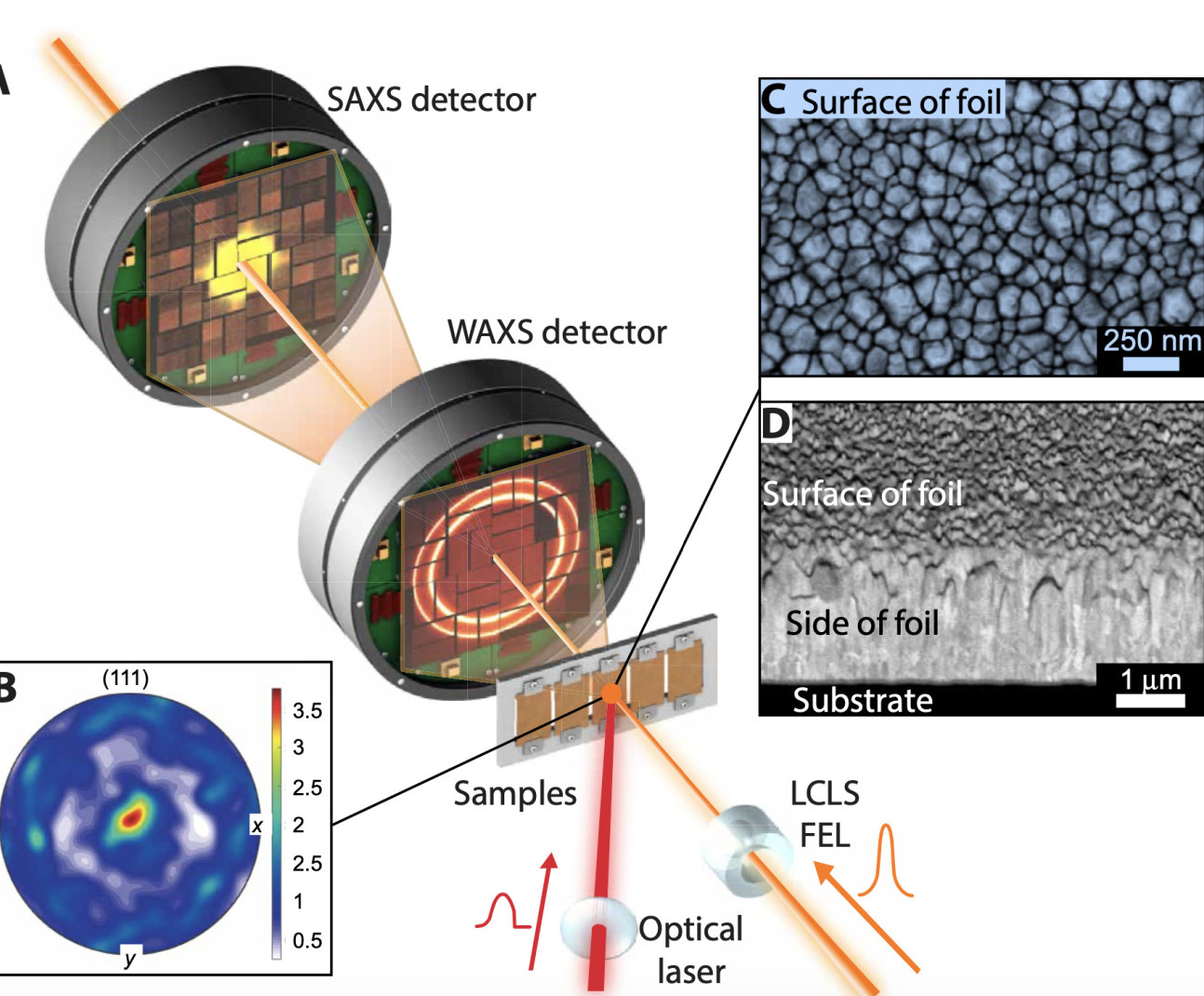Researchers investigate how materials react to extreme shock

An international team has investigated how materials behave under extreme shock to understand how they can be improved.
The team included researchers from the University of Miami, the Department of Energy’s SLAC National Accelerator Laboratory and Argonne National Laboratory, Imperial College London and the universities of Oxford and York.
Researchers have used a new technique to investigate the failure process of materials - how they deform and catastrophically fail under extreme conditions.
Professor David Dye, Professor of Metallurgy at Imperial said: "This is important for understanding laser interactions with matter in chipmaking and the micromachining of jet engine surfaces, or in micrometeorite impacts in spacecraft and satellites"
Investigating extreme shock
The researchers used a new type of facility called an X-ray Free Electron Laser that can make X-ray pulses just 30 femtoseconds long – as short compared to a second as a single second compared to a million years. This allowed the formation of voids to be studied at the very earliest stages of their formation - when they are just the size of a few tens of atoms, and their growth to consume the material over the course of less than a nanosecond.
In the experiment, the researchers shocked copper samples with laser pulses, then used X-rays to track the copper's deformation.
 From the patterns the scattered X-rays made in two detectors, they were able to see how the shock compressed and then expanded the material’s atomic lattice in one detector - while simultaneously observing void evolution in the second detector. The interpretation of the observations was aided by atomic-scale modelling.
From the patterns the scattered X-rays made in two detectors, they were able to see how the shock compressed and then expanded the material’s atomic lattice in one detector - while simultaneously observing void evolution in the second detector. The interpretation of the observations was aided by atomic-scale modelling.
The initial squeeze closed preexisting voids in the material, but researchers then saw the spread of damage as the voids became larger and eventually joined together, vaporising the material. Materials are much stronger under very rapid shocks like these than in normal conditions, and so experiments at this timescale allow new physics to be discovered.
The next step
The researchers will continue to explore how materials can better withstand high-velocity impacts by absorbing extreme shock. The plan is to test more advanced materials under experimental conditions which replicate the real-world experience.
The paper is now published in Science Advances.
This article is adapted from a press release from the Stanford Linear Accelerator Laboratory.
Article text (excluding photos or graphics) © Imperial College London.
Photos and graphics subject to third party copyright used with permission or © Imperial College London.
Reporter
Kayleigh Brewer
Department of Materials